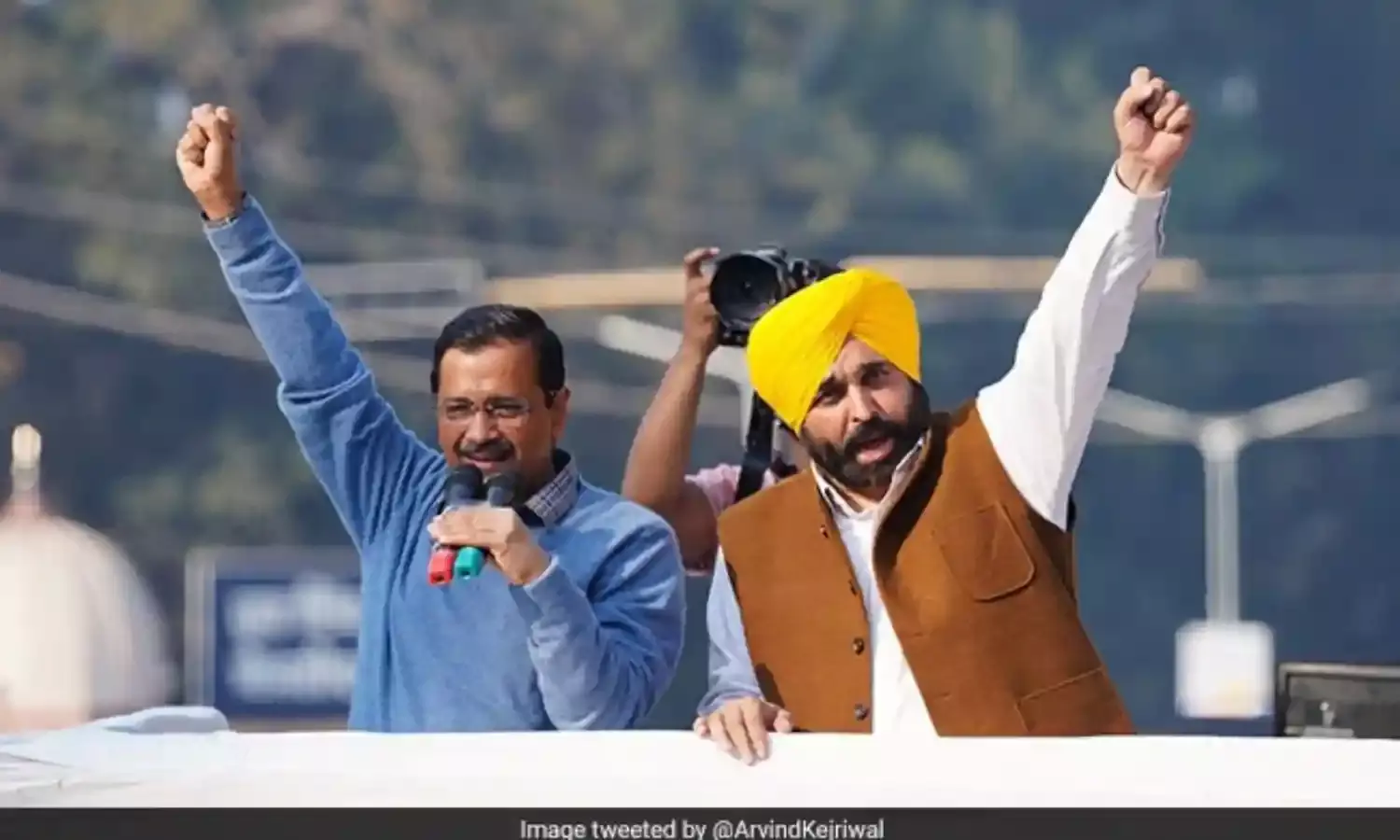AAP ka Punjab
A clear verdict

Punjab’s desire for change has translated into the Aam Aadmi Party sweeping the state in the assembly polls. Unlike last time when voters chose last minute to go with the Congress despite a groundswell for AAP, they expressed no reservation this time in deciding to go ahead with a new party while dumping the traditional political forces of Shiromani Akali Dal and the Congress.
An interesting aspect amid the results is that voters in Punjab, like previous occasions, have shown no confusion in choosing their representatives, and have dispelled the possibility of a hung house that was being expressed by many.
One could see the vocal support for AAP across the three regions of Malwa, Doaba and Majha as one moved across the state before the day of polling. Skepticism came only from previous experience, along with the question of whether the expressions of support would actually amount to a wave till the very finish. And they did.
While Malwa was the AAP stronghold on the last occasion also, the party breaching the boundaries of Majha in particular and extending its comparatively weak support vase in Doaba is a big achievement.
Another feather in its cap is its rise from being virtually in the dumps after the last assembly polls. The party had witnessed a split with several of its legislators walking away, and its performance in the 2019 parliamentary polls was pathetic with its tally coming down to a mere single seat of Sangrur, retained by its present chief ministerial face Bhagwant Mann. In 2014 its tally had stood at four out of 13 seats. Above all, it had fared very poorly at all levels in the last local body elections in the state.
AAP’s victory is also a demonstration of the people’s collective will when they decide to go all the way in discarding all the reasons and promises made by the others. The party put its act together in a span of mere three months, as before that it was the farmers’ movement that was dominating the entire narrative in Punjab.
The most important factor that has contributed to the AAP victory is the people’s desire and understanding for change. For several years now, people have been expressing resentment with the traditional political forces for not addressing their concerns, and there being no let-up in the rampant corruption at all levels.
“Ais vaari aapa dowan te Jhadu mar dena aa,” (This time we will sweep both of them away with the broom, AAP’s poll symbol) was a view one could hear from Punjabis across the spectrum before the polls. Another point made time and again was, “Nawan chor chori karan to darda hai te chhoti chori karda hai” (A new thief is a bit scared and carries out smaller thefts).
It is the ‘Delhi model of governance’ with its emphasis on health and education that AAP’s poll machinery was able to sell successfully to the masses. With public healthcare in shambles, the promise of much publicized ‘mohalla clinics’ on the lines of Delhi certainly caught the people’s fancy.
Good education and subsequent jobs has been a major concern of the people for long. AAP’s promise of beefing up the public education system on the lines of Delhi once again appealed.
Here one has to keep in mind the continuing emigration of Punjabis to greener pastures in the West. Earlier this trend was confined mainly to Doaba but it has now caught up in the other two regions as well, and one sees less enrolment in colleges and more in IELTS coaching centres across Punjab.
Another reason given by people selling off their homes and lands to send their wards abroad is the fear that they will be ensnared by the menace of drugs, an issue that was underplayed in the poll narrative of all the parties this time.
Another factor that helped AAP get its act together was declaring Bhagwant Mann as its chief ministerial face. This helped dispel the notion among Punjabis that the party would impose someone from outside the state, something that clearly goes against the dominant sentiment.
Mann’s popularity as well as his clean image helped too. People often recall his coming out with use of MNREGA funds etc in a very transparent manner. And although the Congress too had declared Charanjit Singh Channi as its chief ministerial face, continuing squabbles on the issue with party president Navjot Singh Sidhu singing his own tune proved counterproductive.
Since Punjab had recorded a 6-point lower turnout this time, there were questions about AAP’s support getting translated into such a landslide. Observers now say that this was possible because the cadres of other parties like the Akalis were dejected and disillusioned with the state of affairs.
Another thing visible to this reporter towards the end of the campaign was that many diehard supporters of the Congress and the Akalis were willing to vote for AAP despite putting up the flags of the traditional parties atop their houses.
The campaign being largely virtual also had a minor role to play in the results, given the fact that parties like the Bharatiya Janata Party and AAP are better versed in this form of voter outreach. With a strong volunteer base, AAP was definitely reaching out with ease to voters with its poll promises.
AAP’s victory has come about largely at the expense of the Congress. The Akalis failing to revive after the setbacks of the previous elections also worked in the party’s favour.
Leaders like former chief ministers Captain Amarinder Singh and Charanjit Singh Channi, Navjot Singh Sidhu, former chief minister Parkash Singh Badal and his former deputy Sukhbir Singh Badal being in a tight spot at the time of filing this report speak volumes about what has happened in Punjab. People’s perception of the traditional parties being in cahoots has seen them vote decisively for a new force.



